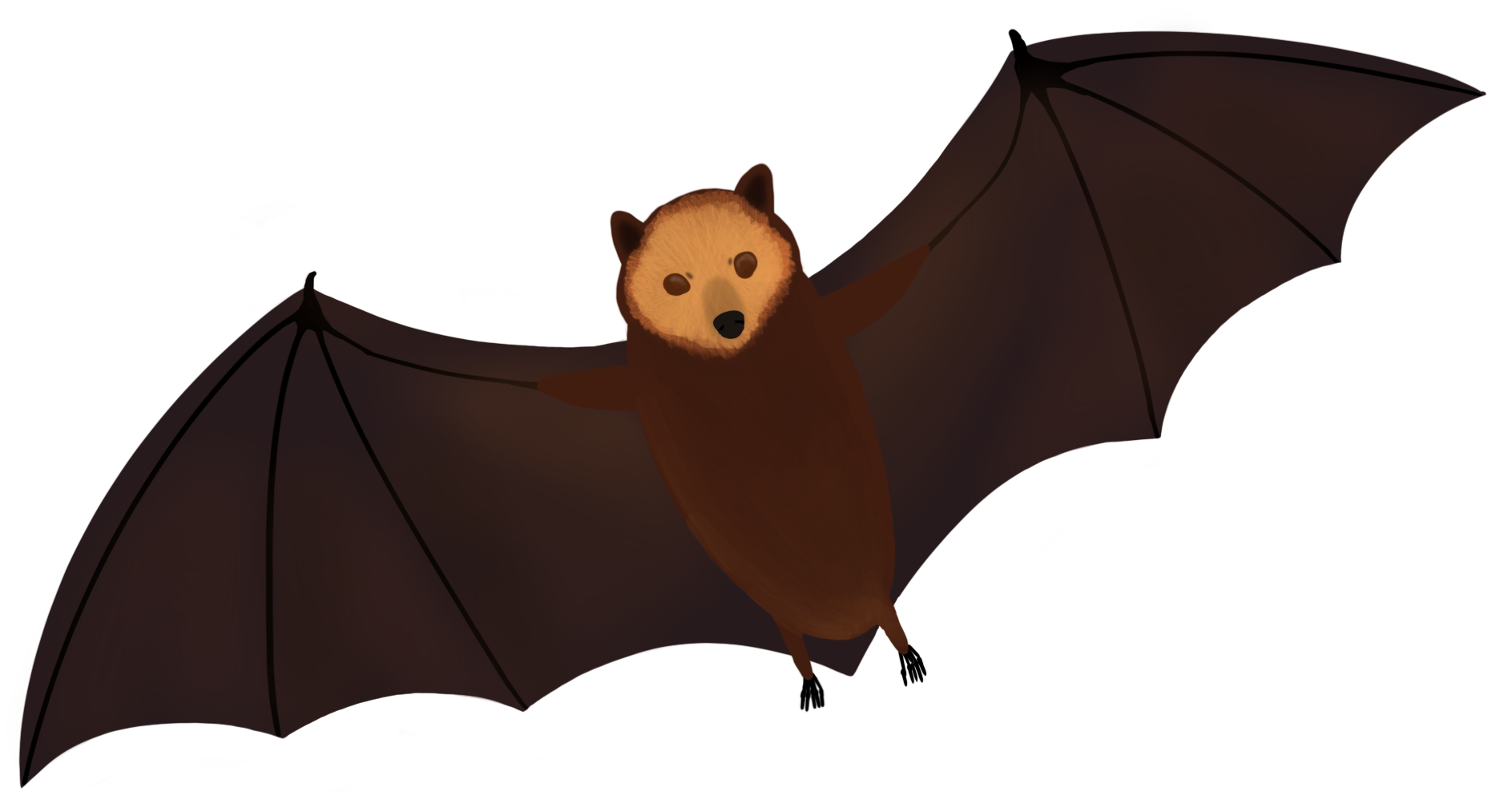Mauritian Flying Fox
mauritian flying fox
Introduction to the animal
The Mauritian flying fox (Pteropus niger) is a large megabat species that lives in Mauritius and La Réunion. It’s also known as the Greater Mascarene flying fox or Mauritius fruit bat.
The Mauritian flying fox can reach wingspans of 80cm/31in. It has small ears, thick hair on the tibiae, dorsal coloration of glossy, blackish brown mantle, tinged with rufous, which extends posteriorly into a dark brown median spinal tract, flanked by buff lateral patches. They have a lifespan of 19 years and weigh between 40 and 800 grams. The species is an endemic species meaning that it is native to its habitat and it can’t be found in any other places.
Range and habitat
The Mauritius flying fox only lives in Mauritius and La Réunion. The bats are mostly located in Bel Ombre forest, some smaller populations can be found in the Combo Forest and Black River Village. Between 1772 and 1801 the Mauritius flying fox became extinct in La Réunion but more recently they have recolonised the island, but they are still a highly threatened species in La Réunion.
The range of the species is very small since it can only be found on the two islands of Mauritius and La Réunion.
The Mauritius flying fox plays a very important role in its ecosystem as a pollinator and seed dispenser. They aid survival of several plant species in Mauritius. One study found that the bats consume 20 species of plants, most of which were native to Mauritius. 36% of these plants are either vulnerable or rare. Seeds are dispersed during flight through their feces.
Behaviors and diet
Mauritian flying foxes are social and roost in large groups. They are active at dusk and dawn, but can be seen during the day. They breed around May and the pups are born between August and December. The bat makes several different noises to communicate. The Mauritian flying fox is a frugivore and nectarivore meaning its diet mainly consists of fruits and nectar.
Conservation status and possible threats
The Mauritian flying fox faces several different threats. Habitat loss is one of these threats, like many forests in this world the rainforests where the flying fox lives are all shrinking meaning that the bat has fewer and fewer places to roost. The biggest threat to the species is culling, the Mauritian flying fox is seen as a pest. Fruit farmers have gotten more and more concerned about the losses in their production and with that of course losses in export. Because of these losses and the complaints of the farmers, the government has decided to start culling the bats. The culling has caused a big drop in the already small population of these flying foxes, officially the government has killed 51,318 bats but it's believed that the actual number is much higher. The species already went extinct on the island of La Réunion once before, luckily they came back that time. Petitions and lawsuits are happening right now and people are trying to convince the government to stop the culling. According to the IUCN there are only 37,700 bats left making the status of the Mauritian flying fox ‘vulnerable’. The third threat and the one threat that people can't really do a lot about is cyclones. If the population of the species was bigger they would of course not be that big of a threat but a big enough cyclone could be devastating to the species. A cyclone is actually one of the biggest reasons for the extinction in La Réunion. Conservation wise, the flying foxes on La Réunion are being protected because of their still low numbers on the island. Sadly the conservation on Mauritius is low to non existing with the amount of bats still shrinking.
References
https://en.wikipedia.org/wiki/Mauritian_flying_fox
https://www.biologyonline.com/dictionary/endemic
https://animalia.bio/mauritian-flying-fox
https://www.nationalgeographic.com/animals/article/endangered-bats-killed-in-mauritius
https://www.iucnredlist.org/species/18743/86475525#assessment-information
Submitted By Chimerasite
for Jungle Expedition: Report
Submitted: 3 years ago ・
Last Updated: 3 years ago
